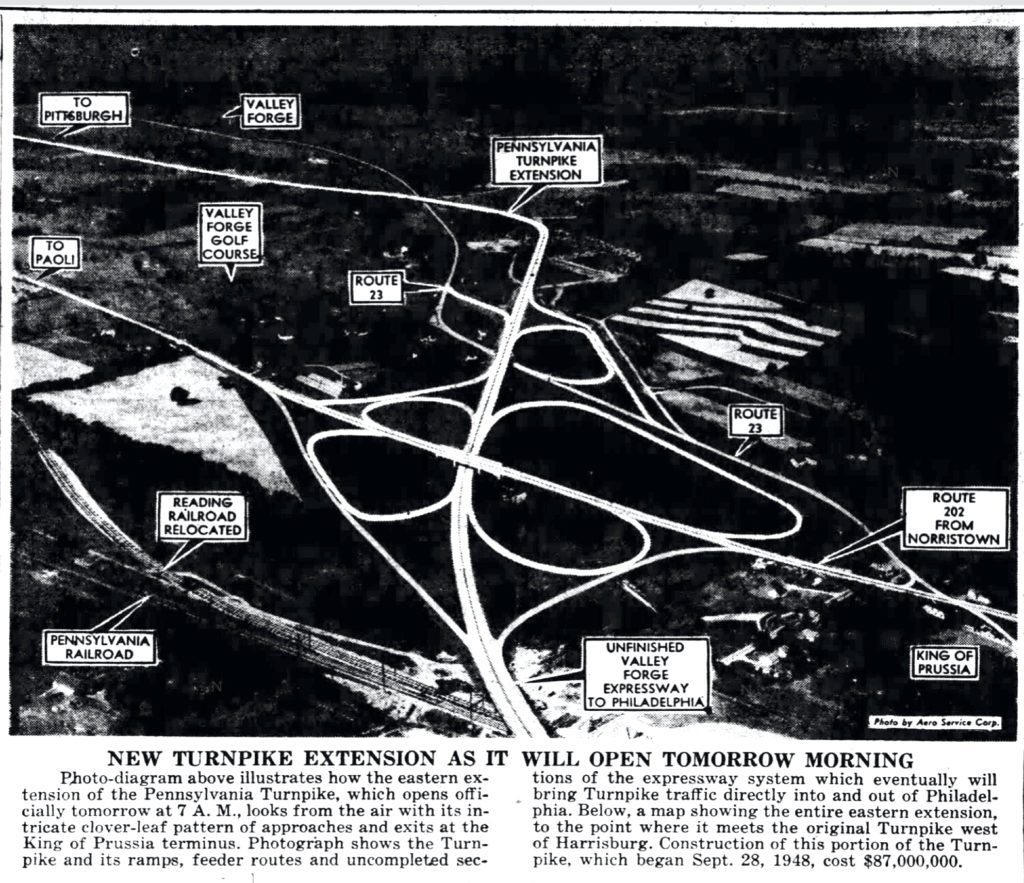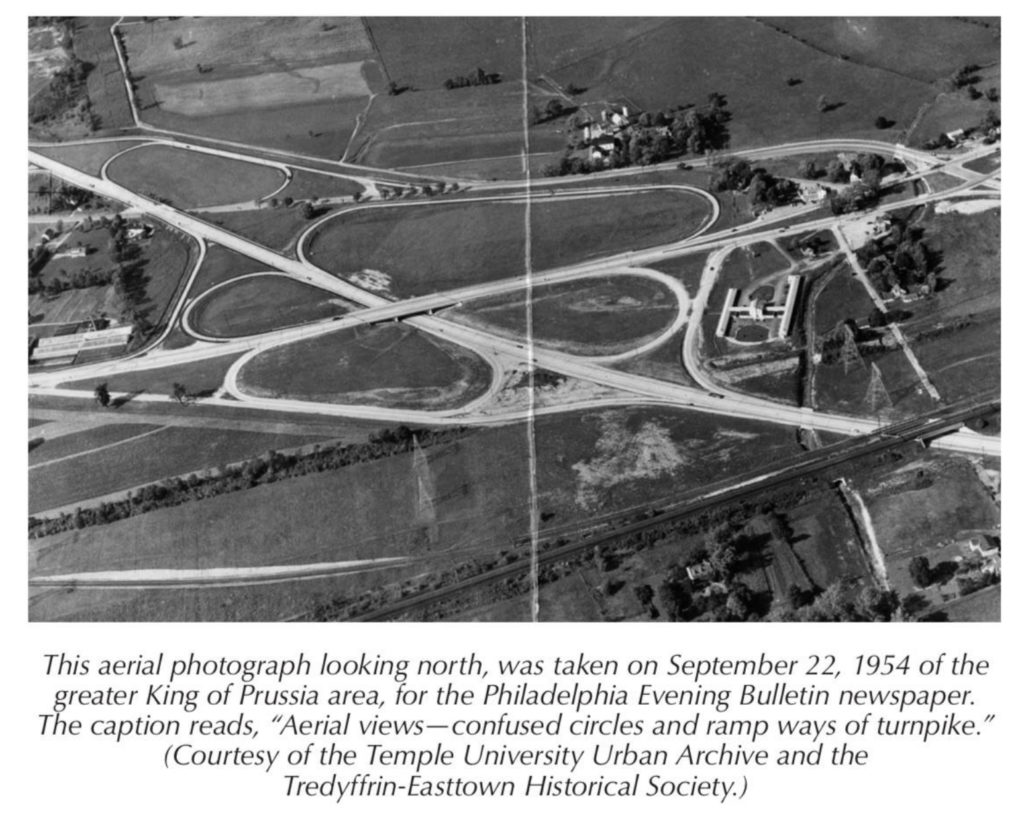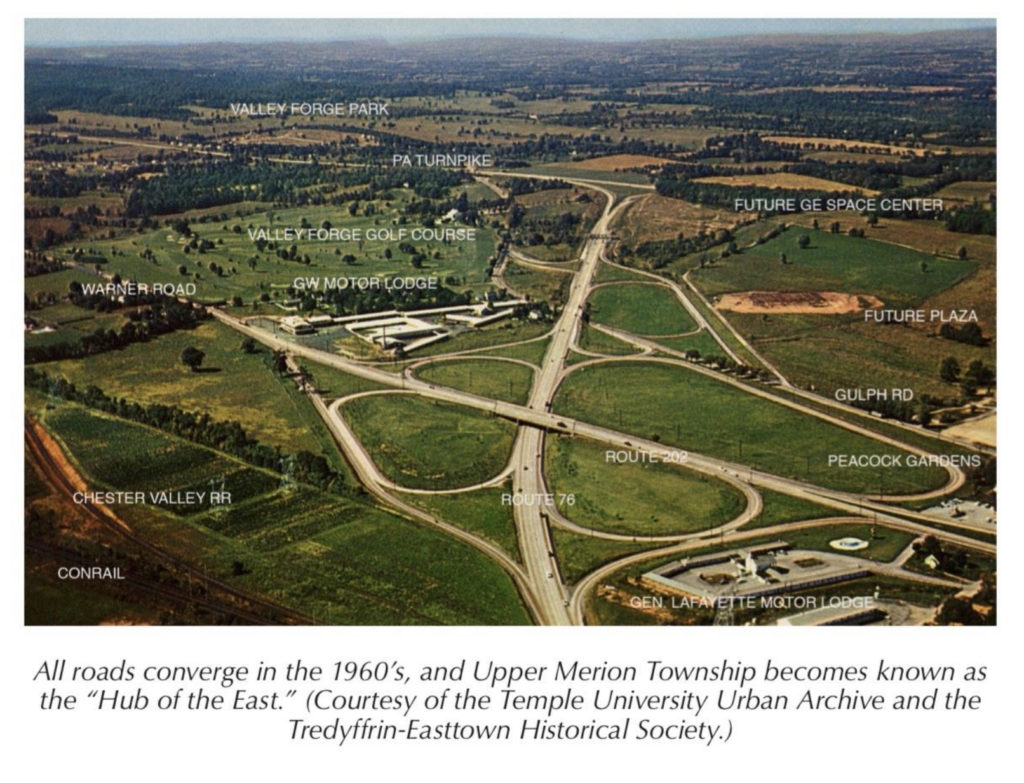The Pennsylvania Turnpike Commission threw open the gates on its new 100 mile eastern extension from Carlisle to Philadelphia on Monday, November 20, 1950. Governor Duff and chairman Evans cut the ribbon at the Valley Forge mainline toll plaza to the west of King of Prussia. The addition was completed in 25 months at a cost $87,000,000 provided through the sale of bonds to private investors.
Three sailors bound for the Philadelphia naval base were the first travelers to cover the full 260 miles of the extended Pennsylvania turnpike.
They wheeled their new convertible onto the highway at Irwin, near Pittsburgh, at 4:30 am, and arrived at Carlisle at 6:55 just as the 100-mile eastern extension was opened. At 8:20 they pulled up to the toll gate in Valley Forge, their car radiator boiling.
The toll for the entire length of the turnpike – from Irwin to King of Prussia – was $2.50. The automobile toll from Carlisle to King of Prussia was $1.20.
In anticipation of unusually heavy traffic with the opening, extra state police patrols were employed on the turnpike. The speed limit was 70 miles an hour. There were no grades exceeding three percent or curves more than six degrees with a minimum sight distance of 1000 feet. Among new safety features were newly-designed delineators or reflectors that “light” the entire stretch of the turnpike for night drivers. The road was also equipped with a modern radio communications system.
Thus began the township’s traditional farmland giving way to the demands of modern transportation, business and industry. Near the original location of the King of Prussia Inn, this highway cloverleaf continued to grow. By 1954 the turnpike extended to the NJ border, by 1958 the Schuylkill Expressway provided access to Philadelphia, and then there were significant upgrades to US 202 and US 422. No wonder in 1976 Upper Merion used the tag line “Crossroads of History and Tomorrow” on their bicentennial brochure.




